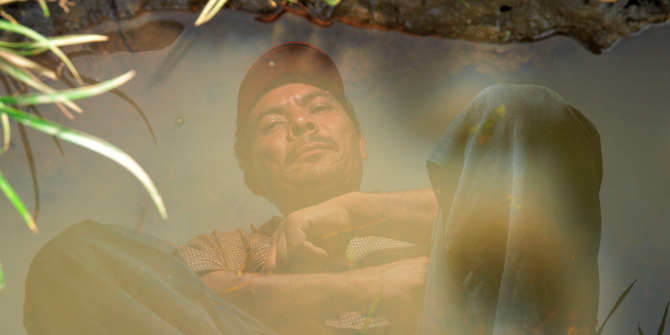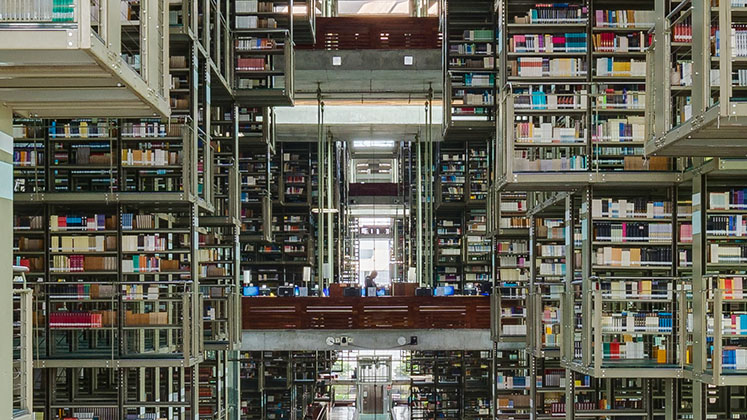Research has found that scientific elites in Colombia are intertwined in their findings compared to their high-income peers from the Global North. Yet, their worldwide impact is limited, as it generally happens with scientists from middle to low-income countries. How can science rethink this approach? Julián D. Cortés (Universidad del Rosario) reflects on this matter.
Albert Einstein, Marie Curie, Alexander Fleming. Those names would come to mind when thinking about a global scientific elite since all of them were Nobel Prize laureates. The recent digitalisation of scientific information allows us to study the global scientific elite’s productivity, career, and impact.
However, this stream of studies has focused on awards such as the Nobel Prize or the Turing Award, mostly granted to researchers affiliated with institutions in higher-income countries —or the so-called Global North. What if we look at scientific elites in middle-low income countries —or the so-called Global South)?
The Colombian Nobel Prize
Alejandro Ángel Escobar was privileged from birth. After graduating from the University of Cambridge, he returned to Colombia to hold high-rank positions in the public and private sectors. He firmly believed in science’s role in society’s progress, for he found inspiration in the philosophy and operation of the Nobel and Rockefeller foundations to support and incentivise Colombian science and solidarity through his own organisation.
The Alejandro Ángel Escobar Foundation prizes aimed to be assigned to “truly outstanding work, which merits the seal of excellence, if not absolutely, then at least within the country’s cultural horizons.” But Ángel Escobar’s wish was not “that the least bad were awarded, but the really good.” After dying at the early age of 50, María Restrepo de Ángel —his wife— assumed the mission of accomplishing Alejandro’s will.
Since 1955, the foundation has awarded three categories in the sciences: physics and natural sciences, social sciences and humanities, and environmental sciences and sustainable development. Colombian authors receive invitations each year to submit their research to receive an assessment by the Foundation’s committee. As a result of its purpose and historical relevance to the country, the prize is now widely acknowledged by the local media as the Colombian Nobel Prize. In fact, the award ceremony takes place on the same days that the Nobel Prize laureates are announced.
However, is it an overstatement to parallel a local scientific elite signalled by a national science award prize to a global scientific elite acknowledged with the most respected science award?
Scientific elites intertwined
In a study published in PLoS ONE, we asked —among other things— if the Colombian scientific elite is light years away from the productivity and impact in comparison to the global scientific elite. Our findings showed that both groups are not located at two well-defined extremes of the science sphere. In fact, they are more intertwined than expected.
Using a composite indicator that entails total impact, normalised coauthorship, and author order, we compared the individual scientific careers of 41 researchers awarded with the Alejandro Ángel Escobar Foundation prize and 41 Nobel Prize laureates in sciences.
The composite indicator ranked Colombian doctor Nubia Muñoz among the researchers of the fourth quartile (the highest). Her work focuses on the human papillomavirus. She also ranked first in the total citations for papers where the scientist is the single or first author indicator —even higher than Nobelists such as Michael Houghton, who discovered the Hepatitis C virus and was awarded the prize in 2020.
Among the third quartile (the second highest), several Foundation prize winners emerged: Germán Poveda Jaramillo (Earth and Planetary sciences); Pablo R. Stevenson and Felipe Guhl Nannetti (Agricultural and Biological sciences); Juan Camilo Cárdenas (Economics, Econometrics and Finance); Ana María Rey Ayala (Physics and Astronomy) along with Carlos Alberto Vélez Pardo and Marlene Jiménez Del Rio (Biochemistry, Genetics and Molecular Biology).
All these researchers are part of the third quartile with Nobelists such as Thomas Schelling (Arts and Humanities); James Mirrlees (Economics, Econometrics and Finance); Makoto Kobayashi (Chemistry); Georges Charpak (Medicine); and François Englert (Physics and Astronomy). In essence, neither scientific elite was fractured into two mutually exclusive groups.
Rethinking the impact of Global South science
The constraints and difficulties of doing science in any Global South country are well known —particularly by Global South researchers. Yet, despite such factors, what is barely understood is a broader dimension of the impact of the science produced by and from the Global South.
Our study sheds light on the research performance-impact standards and agenda between the Global North and South. Also, as visualised by Alejandro Ángel Escobar, it provides an in-context assessment of outstanding local research, or, in his own words: “At least within the country’s cultural horizons,” which, as noticed, share impact features of that of the global scientific elite.
Despite these grained insights on Global South scientific elites, a whole story is pending to be told. The inclusion and comparative study of the Royal Society Africa Prize, the Highest Science and Technology Award in China, or the Prêmio Almirante Álavaro Alberto in Brazil, can help us to deepen —or even rethink— the understanding of the research impact and structure in the context of developing regions and countries.
Notes:
• The views expressed here are of the author rather than the Centre or the LSE
• Please read our Comments Policy before commenting
• Banner image: A group of students listens to a lecture in Bogotá / United Nations University World Institute for Development Economics Research (UNU-WIDER) – (CC BY-NC-SA 2.0)





